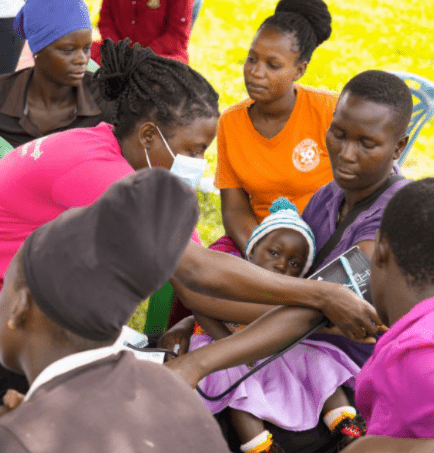HIV/AIDS continues to be one of the most pressing public health concerns globally, affecting millions of lives every year. While strides have been made in treatment and awareness, understanding how HIV spreads is essential in combating the disease. This blog aims to shed light on the primary causes of HIV transmission, the associated risks, and the critical steps for prevention.
What is HIV/AIDS?
HIV (Human Immunodeficiency Virus) is a virus that attacks the body’s immune system, specifically targeting CD4 cells (T cells), which help the body fight infections. If left untreated, HIV can lead to AIDS (Acquired Immunodeficiency Syndrome), the final stage of the virus, where the immune system is severely damaged and more vulnerable to opportunistic infections.
How HIV Spreads
HIV is primarily spread through specific body fluids, including blood, semen, vaginal fluids, rectal fluids, and breast milk. It cannot be transmitted through casual contact, air, water, or insect bites. The most common modes of transmission include:
- Unprotected Sexual Contact:
- HIV can be spread through unprotected vaginal, anal, or oral sex with an infected person. Anal sex poses the highest risk, followed by vaginal sex, due to the delicate tissues in the anus and vagina that allow for easier entry of the virus.
- Sharing Needles and Syringes:
- People who inject drugs and share needles or syringes are at high risk of contracting HIV. Sharing drug injection equipment can result in direct exposure to the virus.
- Mother-to-Child Transmission:
- An HIV-positive mother can pass the virus to her baby during pregnancy, childbirth, or breastfeeding if appropriate medical precautions are not taken.
- Contaminated Blood Transfusions:
- Although rare in countries with rigorous screening protocols, HIV can still be transmitted through blood transfusions or organ transplants if the blood or organs are not properly tested.
- Accidental Exposure to Infected Blood:
- Healthcare workers and others who may come into contact with blood are at risk of contracting HIV if exposed to the virus through open wounds or needle-stick injuries.
Myths and Misconceptions About HIV Transmission
One of the significant challenges in fighting HIV/AIDS is dispelling myths about how the virus spreads. Here are a few common misconceptions:
- Casual contact: HIV cannot be transmitted through hugging, kissing, handshakes, or sharing dishes or food.
- Mosquito bites: HIV is not spread through insect bites.
- Public facilities: Using public toilets, swimming pools, or sharing towels does not transmit the virus.
High-Risk Populations
While anyone can contract HIV, certain groups face a higher risk due to behavioral, social, and biological factors. These include:
- Men who have sex with men (MSM): The prevalence of HIV is higher in this group, particularly when engaging in unprotected sex.
- People who inject drugs (PWID): Sharing needles dramatically increases the likelihood of HIV transmission.
- Sex workers: Due to the nature of their work, sex workers are at increased risk, especially when safe-sex practices are not followed.
- Transgender individuals: Stigma, discrimination, and lack of access to healthcare make transgender individuals particularly vulnerable to HIV.
Preventing HIV Spread
Preventing HIV requires a combination of individual responsibility, access to healthcare, and education. Here are some critical prevention strategies:
- Safe Sexual Practices:
- Using condoms consistently and correctly during every sexual encounter significantly reduces the risk of contracting HIV.
- Pre-exposure prophylaxis (PrEP) is a daily medication that can help prevent HIV infection in high-risk individuals.
- Regular HIV Testing:
- Knowing your HIV status is crucial for preventing the spread of the virus. Regular testing, especially for those in high-risk groups, ensures early detection and prompt treatment.
- Antiretroviral Therapy (ART):
- For those living with HIV, ART can suppress the virus to undetectable levels, significantly reducing the chances of transmitting it to others (known as Undetectable = Untransmittable, or U=U).
- Avoid Sharing Needles:
- People who inject drugs should use sterile needles and avoid sharing equipment. Needle exchange programs and addiction support services can help reduce this risk.
- Preventing Mother-to-Child Transmission:
- HIV-positive pregnant women can take antiretroviral medication to lower the risk of transmitting the virus to their babies during pregnancy and breastfeeding.
- Post-exposure Prophylaxis (PEP):
- If someone is exposed to HIV, PEP can be taken within 72 hours to reduce the risk of infection.
The Global Impact and Hope for the Future
HIV/AIDS affects approximately 38 million people worldwide, with significant impacts on communities, healthcare systems, and economies. However, the world is closer than ever to reducing the spread of HIV. Advancements in medication, widespread testing, and increased education are key factors in this progress.
We must continue to raise awareness, fight stigma, and provide the necessary resources to prevent the spread of HIV and ensure that those affected can live long, healthy lives.
Conclusion
HIV/AIDS is preventable, and understanding how it spreads is the first step in curbing the epidemic. Safe practices, education, and access to healthcare can save lives. Let’s work together to support those at risk, break down misconceptions, and stop the spread of HIV/AIDS for good.



